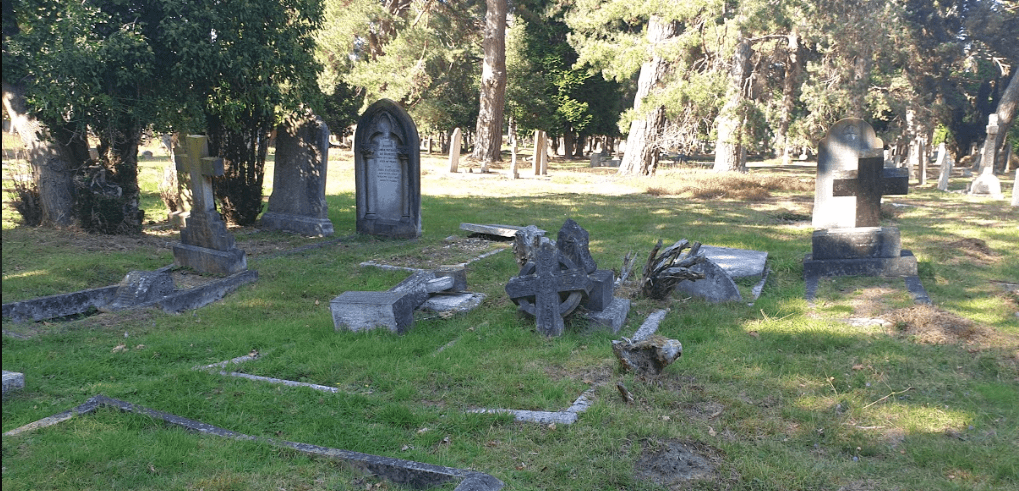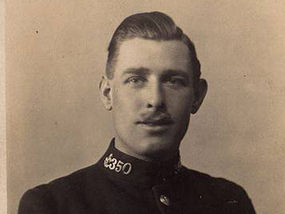
On the 6th of October 2019, myself and Gem were treated to a fascinating walk and talk by an esteemed Brookwood guide, Barry Devonshire. Nor were we the only ones in attendance, as on our arrival we were greeted by a crowd of thirty or more people. From goth girls to octogenarians, young, with families or solo enthusiasts, the group was a real mix of demographics.
Barry gave a preface to the cemetery, outside the hut, and the weather chose at this point to both shine and pour, giving us a dazzling array of rain dappled shafts of light. Our guide explained some of the history of Brookwood, how it came into being and why, and about the exciting stories held within the bracken and brambles of this famous cemetery. Preamble over, we set off through the dew dusted grass and crunched through early autumnal leaves until we reached the first stop.
We were shown the grave of Ernest Boshier, a deceased Surrey constable, known as one of the shrewdest but kindest officers on the beat; indeed Barry related a story of a burglar who on his detention stated “I do not mind being arrested by Mr. Boshier, he plays fair”. Later, Barry regaled us with the story of ‘The Jean-Paul Vaquier Case’ and Boshier’s involvement. A tale well worth researching, involving poison, a pianist and a dramatic apprehending.

Deeper into the cemetery, our guide took us to the grave of George Clarke who was one of only eight plain clothes police officers at Scotland Yard in 1842. Clarke was an experienced officer and would go to the ends of the earth (quite literally in one case) to arrest a suspect. In a career spanning over 40 years, Clarke was involved in the first railway murder, the Plaistow Marshes Murder and investigations into the Fenians. For us, Clarke sparked big interests as he will have been involved in the arrests and court cases of some of the men who passed through the gates of Woking Prison.
On a similar theme, we were shown the grave of Adolphus “Dolly” Williamson, the first head of the detective branch, and eventual chief constable, of the Metropolitan Police. The famed officer linked to the Ripper case received multiple letters from copycats and those claiming the ripper’s identity for themselves.

Barry explained to us case after case, graves of officers and miscreants alike, with each stone having a story to tell. We won’t go into them all, but it’s curious how when we look at graves and gravestones, we see them as a finality, as something static: the last page in a chapter of someone’s life. But Barry really made them come alive, each letter carved into granite had all the greater significance for the context. At points there was sorrow, at the great and the good buried and forgotten, joy, at sweet blandishments left by husbands or wives, outrage, at murderers who may have gotten away with it, and even, as one would expect in a graveyard, thoughts about one’s own mortality.
The fascinating thing about this walk, aside from the tales told therein, was that one day we would all be there and not just as a day visitor.
The question revolving around all our heads was: how would you like to be remembered?
For more information about Brookwood Cemetery and those interred within its walls have a look at their website. https://brookwoodcemetery.com